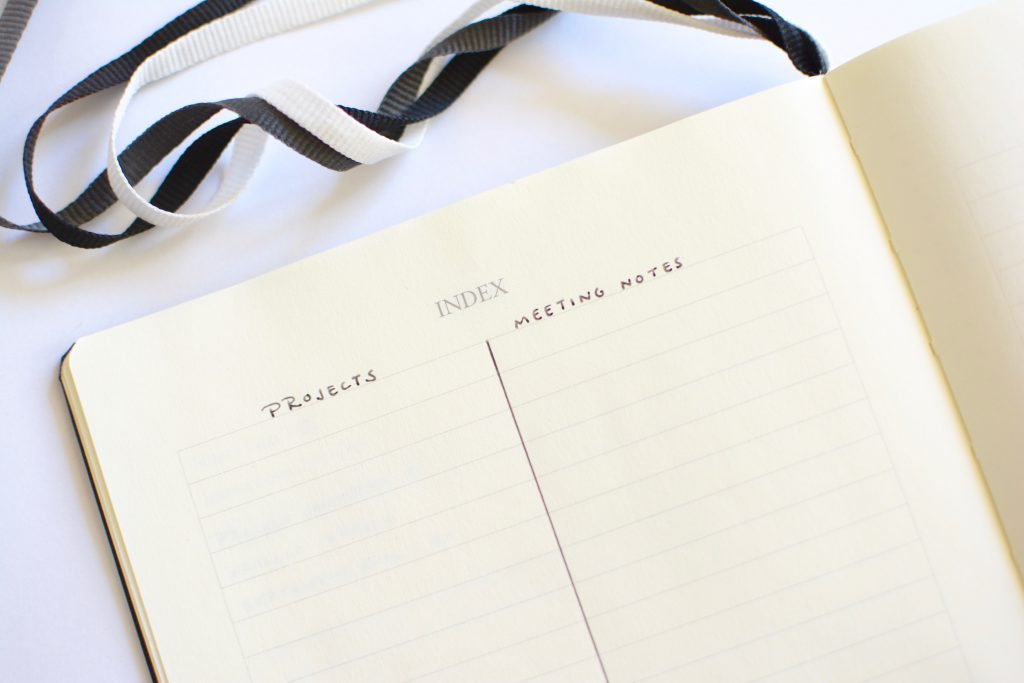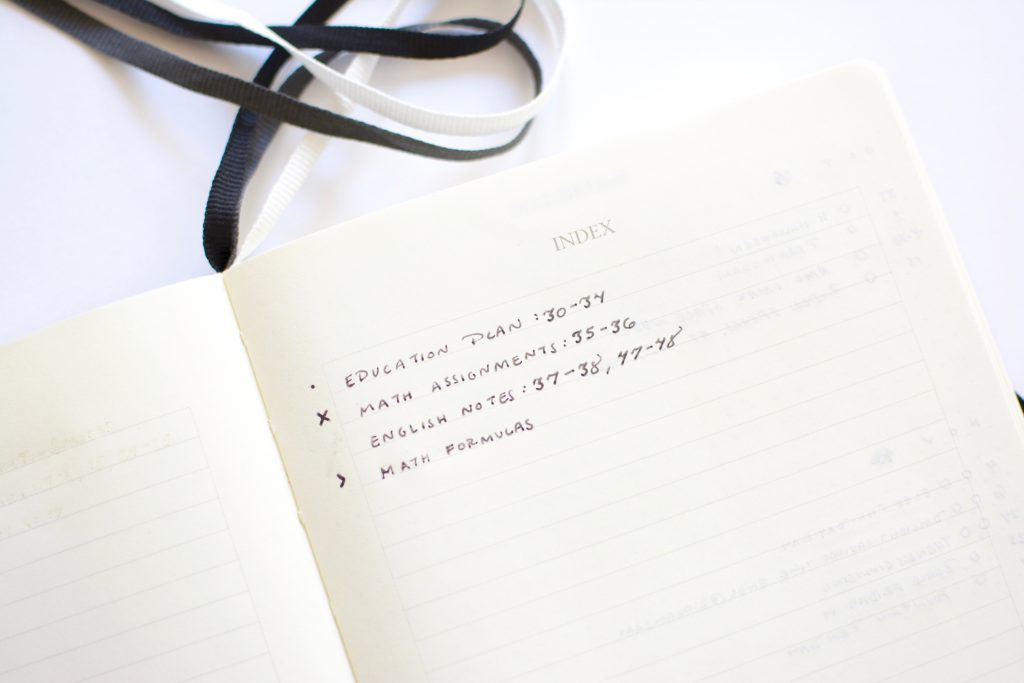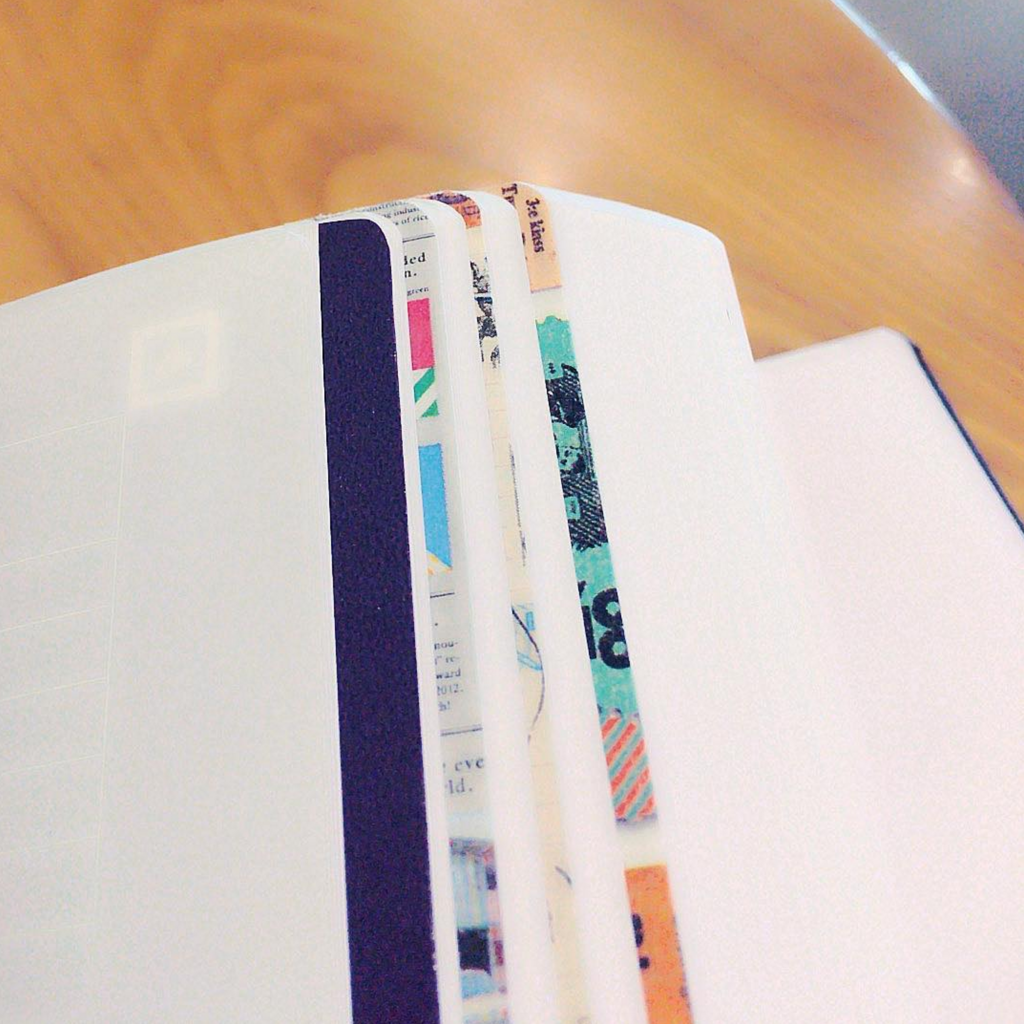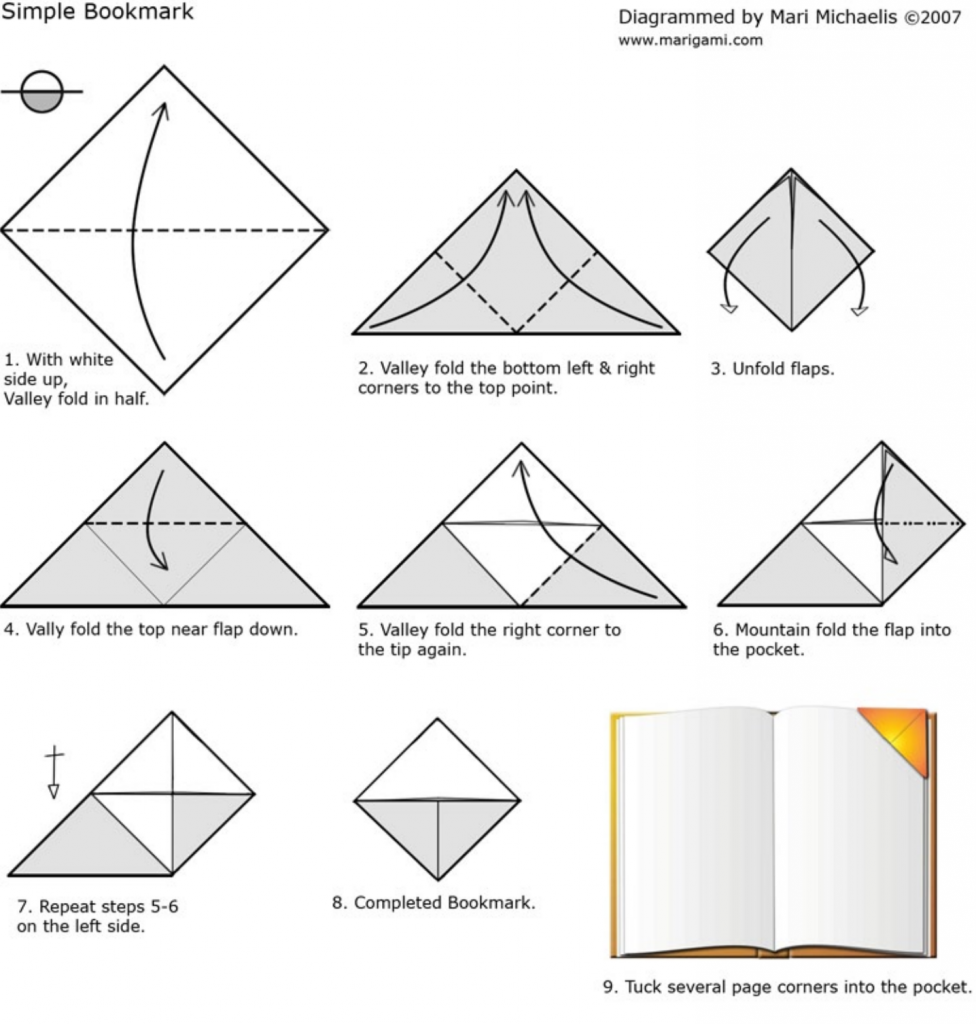The Core Index
The Index is the backbone of the Bullet Journal. It’s how you organize everything you add to your Bullet Journal. Ryder does a wonderful job of explaining what it is and how to get going with it here.The Index is an easy and quick way to organize the guts of your Bullet Journal so you can find what you’re looking for. It’s also handy when you're looking back at old Bullet Journals to see the contents at a glance.Tips on using the Index:
- Add Monthly logs and Collections to the Index.
- You don’t need to index your Daily Logs.
- Update the Index as soon as you create a new Collection.
- It’s chronological, so add to it as you go through your notebook.
- Be specific when adding an entry to your Index. Instead of writing “Udemy course” write the actual course’s name “Photography Basics”
- If you run out of room in your Index, simply flip to the next available page (or start from the back) and continue business as usual. Connect the Indexes by Threading.
Index Modifications
These are a few clever ideas to power-up your existing Index. Dedicated Indexes. The simplest thing you can do to boost your Index is to create a dedicated Index to a particular topic. One way is to use the first spread for personal and the second for work, like Ryder shares inthis video. Other ideas could be to have one page could be for your general collections, another for meetings, and another for projects. This way you can quickly see all of your collections under a specific topic at a glance. Split it in half to maximize space.




Index Variations
Bullet Journalists have come up with inventive ways to further adapt and power-up the Index, which you’ll see below. These methods work beautifully along with the traditional Index as Ryder presents it. These ideas are not meant to replace the Index, but to work in tandem. Of course, it's up to you to use what works for you. Ribbons. Theofficial Bullet Journal notebook has 3 handy ribbon bookmarks which make it easy to flip to pages you reference often. You could have one at your Future Log, another at your Monthly Log and the last on your Daily Log or a Collection you’re working on. If you love the ribbons and would like to have more, simply grab a few ribbons and tie them around the top of the existing ribbons and voila! More ribbons.

Photo Sources: Kim Alvarez | Amy B.
Corner writing. Invented by Dee of Decade Thirty, this is a pretty clever idea especially if you have a notebook without numbered pages and you don't want to number the pages. You can write the general topic at the corner of the page and you can find what you're looking for by flipping through the pages and reading the corners.
Photo Source:@decadethirty
Signifier Magnifier. The idea is to illuminate Signifiers on the edge of the page to make it easier to find what you’re looking for when you’re scanning your pages for that tidbit of information. Whether you’re looking for that genius idea you had or something else, this can be useful in your search. It’s especially handy if you’re the kind of person that prefers recording everything in your Daily Logs. It also makes the process of Migration a tad bit simpler when flipping through your Bullet Journal reviewing open tasks because all you have to do is glance at the corner of the page to see a mark indicating that you’ve completed all the tasks on that page.


Photo Source:High Five via LifeHacker
-Colorful True to her color-loving nature, Kara ofBoho Berry took this idea and added some color to the edges of her Bullet Journal as a type of “color index”. To boost the idea a bit, she made flip-out cards reinforced with washi tape to easily flip out and refer to when coloring the edges according to certain categories. You can see all the different instances those collection occur at a glance.

Photo Sources:@boho.berry |@qualcosadierre
Tabs. Tabs are an easy way to flip to frequented collections. There are a few ways to tab. You can grabclear ones, cut them down to size, and write or draw a symbol to indicate what the page contains. Other ideas include sticking twodot stickers together, or to buy someindex tabs.

@yesyescoffee |@wanderandsoul |@delightful_planner |@plannerphile | Amy B. |@thehabitproject
Washi Tape. You can also use washi tape to mark the edges, either use a small piece or line the entire edge of the page. Some Bullet Journalists mark only their Monthly Logs with washi tape or use one kind of washi for that month’s pages to see how many pages they used.
Photo Source:@bulletjournaleuse
Origami bookmark. This is a simple bookmark to make and use for a page or two.
Photo Source:Origami Resource Center
Take these as inspiration. You can take parts of ideas that you enjoy and ignore those that don’t resonate. I hope this article helps you get more out of your Indexing journey! Have you come up with any handy indexing methods that you enjoy? Please share in the comments below to grow this resource even further! :)





Kimberly B Stone
May 15, 2017
Excellent suggestions. I’m drawn to the colored dot, with a flip out index.